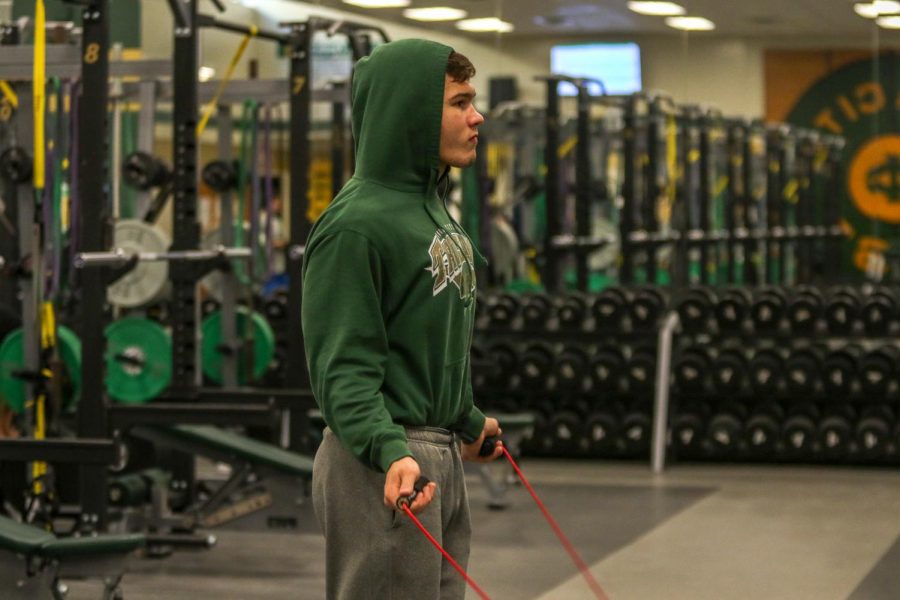Mind over matter
West High wrestlers transitioning from the football field have struggled with cutting weight in the past, but growing knowledge of the practice has made the transition easier for the entire Trojan lineup.
Varsity wrestler Will Hoeft ’20 jumps ropes during his open period as part of his weight cutting process. Hoeft placed sixth at the Iowa high school state wrestling meet last year competing with a torn ACL.
One can of tuna.
That’s all wrestler Brett Pelfrey ’22 allowed himself to consume on the day of last year’s dual meet against City High.
In the weeks leading up to the meet, Pelfrey, who plays tackle for the Trojan football team, made a choice to enter into the 195-pound weight class. After bulking up for months during the football season, Pelfrey had to reverse course and lose all of the weight he had gained in the months prior.
“Last year was tough,” Pelfrey said. “I had three or four weeks notice going from 230 [pounds] to 195 [pounds].”
The day before the meet Pelfrey was 12 pounds over. In order to get down to under 195, Pelfrey spent two hours in a sauna and ate nothing the day before the meet.
While Pelfrey’s experience is typical for football linemen transitioning into wrestling season, it is also becoming rapidly less common among Iowa high school wrestlers. With growing knowledge of proper weight cutting techniques and scientific guidelines set by the Iowa High School Athletic Association (IHSAA), more Iowa high school wrestlers are able to compete in a more natural weight class.
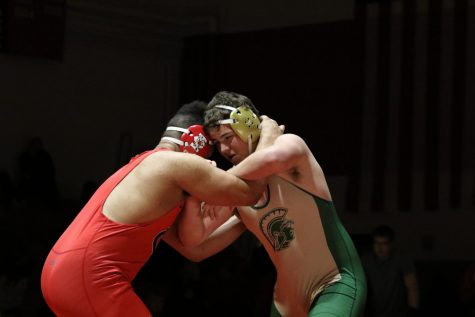
Brett Pelfrey ’22 attempts to escape from Daryn Stewart ’20 on Jan. 3, 2019. Pelfrey wrestled in the 195-pound weight class last season.
With the recent success of the West High football program, some Trojan wrestlers have had to make drastic weight cuts after their season ends on the gridiron. With such a short turnaround, football players, especially linemen, go from eating as many calories as they can to essentially fasting before the season.
“That is the one negative that I see is when guys have that quick turnaround,” assistant wrestling coach Kody Pudil said. “That week probably does suck a lot…twenty pounds seems like a lot to a natural person, but until they get into the wrestling room for a two-hour workout and lose eight, nine pounds they realize that that weight can come off really fast.”
In 2016 and 2017, the Trojan football team played their final game a week after wrestling practice started, giving wrestlers virtually no time before the team’s first matches in early December. This year, football players have a couple of extra weeks to utilize as they cut weight before the season which should yield healthier weight cutting techniques.
One way the IHSAA has simplified the process for all wrestlers is by implementing weight-loss plans for wrestlers cutting weight. Take a look at the infographic below to see how the IHSAA’s weight-loss plan works.
A misconception among casual observers of the sport is the notion that the more weight one cuts, the more successful they would be. By shedding pounds and dropping weight classes, an athlete conceivably holds an advantage by competing against smaller competitors.
For many, however, that is not the case.
Both Pelfrey and wrestler Jackson Brennan ’20 described a natural threshold for weight loss wrestlers feel is better left uncrossed. Brennan weighs around 150 pounds naturally, and although the IHSAA allows him to wrestle at 132 pounds, he plans to compete in the 138-pound weight class this season in order to maximize his conditioning and match endurance.
“Where you draw the line is when your conditioning goes down, you’re running out of energy, and can’t make it through the matches wrestling full pace,” Brennan said.
Class 3A state runner-up Hunter Garvin ’22 wrestled in the 120-pound weight class last season, and while he could technically wrestle at the same weight this winter, he will be competing right below Brennan in the 132-pound weight class.
“At 132 [pounds] I feel strong and healthy at the same time,” Garvin said. “…I feel like it’s where I can perform my best at.”
Brennan and Garvin are not in the minority in their decisions. In fact, nearly every wrestler in the Trojan lineup this year could be wrestling at a lower weight but have settled on a number they feel satisfies their health while also allowing them to optimize their competition success.
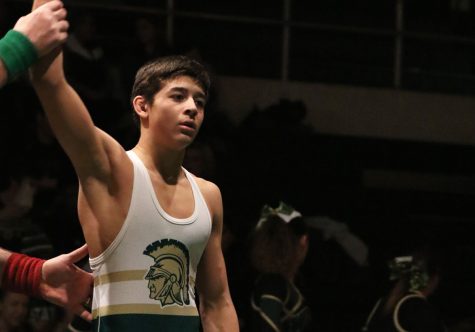
Hunter Garvin ’22 raises his hand victoriously in the air after defeating Dubuque Wahlert’s Colton Kisting ’22 on Jan. 17, 2019. Garvin wrestled at 120 pounds last season, but is making the jump up to 132 pounds this year.
As for incoming freshmen and first-year senior wrestlers such as Grant Henderson and Anu Dokun, coaches are less worried about cutting weight than they are with technique and proper form. The stigma surrounding weight cutting can seem intense to those new to the sport, but the West High coaches seek to prioritize well-being and fitness over arbitrary numbers on a scale.
“A lot more of your new wrestlers, we don’t push them to cut weight at all,” Pudil said. “Kids actually find out as soon as they come out for wrestling their weight just naturally comes off. Just from our practices, our workouts you’re naturally gonna shed maybe 10 pounds of your walking around weight.”
The concept of competing at a more natural weight evidences advancement in Iowa high school wrestling, one which has evolved even from Brennan’s freshman year.
“We’re starting to shy away from cutting more than 10-15 pounds,” Brennan said. “Guys feel better up a weight [class] so they don’t make the cut down to the lower weight [class]. They cut to the weight that they feel good at.”
Pudil placed at the Iowa high school state wrestling meet three times while at West High, including two runner-up finishes. Since his days as a competitor, and in his tenure as a coach, Pudil has sensed a shift in wrestler’s attitudes towards weight cutting.
“I’ve been here now for ten years and I think that mindset has changed,” Pudil said. “…There isn’t that big need to get down to the lowest weight that you can get. It’s finding the weight that best suits your body and a lot of times it’s not your lowest weight.”
Expect this year’s Trojan wrestling team to be more relaxed, enthused and healthy wrestling at weights closer to their natural body weight.
As for Pelfrey, he hopes to stay out of the sauna and maintain a more consistent eating schedule wrestling comfortably at 220 pounds this season.
“[Wrestling] is just having fun and kicking ass,” Pelfrey said.
Your donation will support the student journalists of West High School. Your contribution will allow us to purchase Scholarship Yearbooks, newsroom equipment and cover our annual website hosting costs.
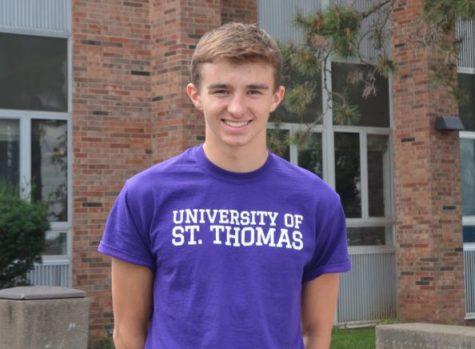
Joe is in his second year working for the West Side Story publications as the sports editor. Joe plays golf, basketball and runs track at West High. He...
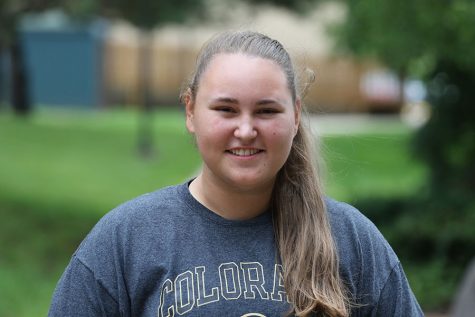
Kara is a senior at West and this will be her third year on staff. She is the Online Editor-in-Chief and Co-Sports Editor this year. When Kara isn't covering...



